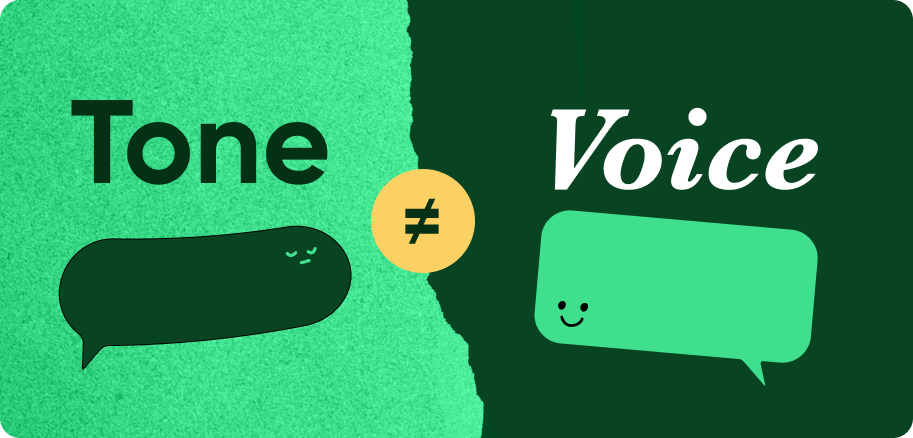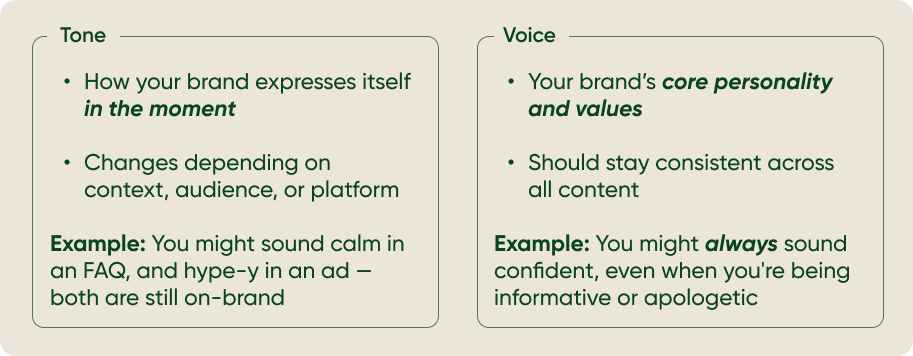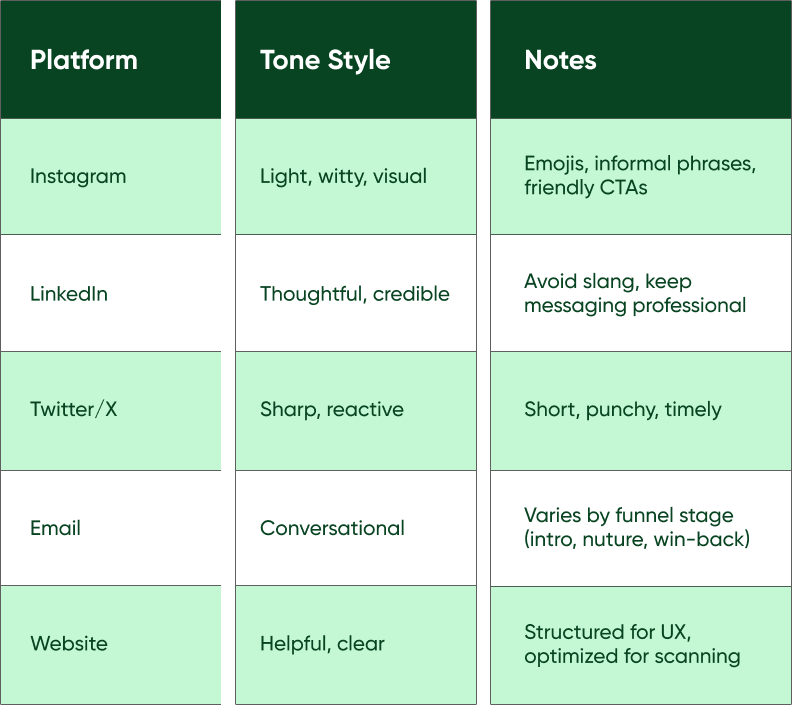Informative
August 6, 2025


There’s nothing a copywriter hates more than a butchered tone of voice. Or worse — the tone being casually swapped out for a “voice” by a well-meaning marketing manager who doesn’t quite know the difference.
As a copywriter-turned-strategist, I’ve written and edited my fair share of tone-of-voice documents. I’ve also spent plenty of time pushing back, pleading, and occasionally begging for them to be implemented consistently. But the world of brand tonality — like anything remotely creative — is often wrapped in ambiguity and clichés. That makes it hard to define what your tone of voice is, and what it definitely isn’t, especially when you're still in the middle of brand identity development.
Chances are, you’ve felt some of these symptoms: your brand sounds witty on Instagram, robotic in email, and weirdly formal on LinkedIn. The tone changes depending on who’s writing the copy — or which stakeholder gave the last round of feedback. One post sounds like your social media manager. The next? Like a bot fed your brand book and spat out polite platitudes. In the age of AI and template-driven content, many brands have unintentionally replaced voice with volume.
This blog isn’t going to give you five generic tips like “imagine your brand as a celebrity” or “tap into your values”. Those aren’t wrong — but without a structured approach, they’re exactly the kind of empty advice that creates inconsistency. What you need is a system — a way to define, document, and execute your tone of voice so it sticks across platforms, teams, and timelines.
Let’s start with the basics.
Before you fix your brand tone, you need to understand what you're actually fixing.
1. Your voice is consistent. It reflects the brand’s core personality, values, and character. It doesn’t change.
2. Your tone, on the other hand, is situational. It adjusts based on the context — who you're speaking to, what you're saying, and where you're saying it.

Nike, for example, has a voice that’s inspirational, edgy, and transformative. It speaks to ambition and self-belief — if you have a body, you're an athlete. That voice doesn’t waver.
But the tone? That shifts.
Both examples live within Nike’s voice, but the tone adapts depending on the moment. This distinction matters because most tone-of-voice inconsistencies aren’t due to a bad voice — they’re due to an undefined or poorly managed tone.
This is your foundational brand guide. It tells your team how your brand sounds — and how that sound changes depending on where, when, and why you're speaking. If you already have a brand identity development process in place, you’re halfway there. But if you're starting from scratch, begin by answering a few essential questions:
The Brand Prism exercise is a great way to work through these. Bring your stakeholders together, block out a few hours, and align on your voice across personality, culture, tone, and behavior. It might feel like a workshop cliché, but it’s one of the most useful tools you’ll come back to when making real-world decisions — from hiring a copywriter to launching a campaign.
.png)
A good tonality document goes beyond adjectives like “friendly” and “bold”. It gives your team a working vocabulary — and a gut check for whether content is on-brand.
This is what makes your voice usable, not just inspirational. It becomes a tool — not just a deck.
Now that you’ve defined the voice and tone, the next step is to make sure it travels well. What reads perfectly on a billboard might feel tone-deaf in a customer support email. What sounds clever on Instagram might fall flat on LinkedIn.
To fix this, create platform-specific tone guidelines. Yes, it might feel like another document. But this is the step that makes the difference between “cool strategy” and “coherent brand.”
1. Style guide selection: Decide if you're following a formal editorial system.
2. Platform-specific tone rules: Adjust tone by channel — without changing the voice.

3. Emoji and abbreviation usage: Yes, you need rules here too.
4. Jargon and technical content: If your brand includes complex or data-heavy content:
The goal is clarity — always.
Once you’ve built this, you’re not just “defining your tone”. You’re building a replicable, scalable system that can be taught, referenced, and actually used.
And yes, before you roll it out across platforms, test it. Share your tone samples with real customers or target users. Check how they respond. You’ll be surprised at how often small tweaks can make a huge difference.
Oatly
“It’s like milk, but made for humans.”
Mailchimp
“Send better emails. Sell more stuff.”
Patgonia
“We’re in business to save our home planet.”
Your tone of voice is how people feel your brand before they buy from it. Get it right, and your copy, content, and campaigns all start to feel like they came from the same place. Get it wrong, and you're constantly rewriting, backpedaling, or explaining what your brand “meant to say”.
At wonderwork, we help scale-ups not only with brand identity development but with the systems that make brand voice stick in real life — across every channel and campaign. Not just because consistency is nice to have — but because it's the foundation of trust, clarity, and growth.